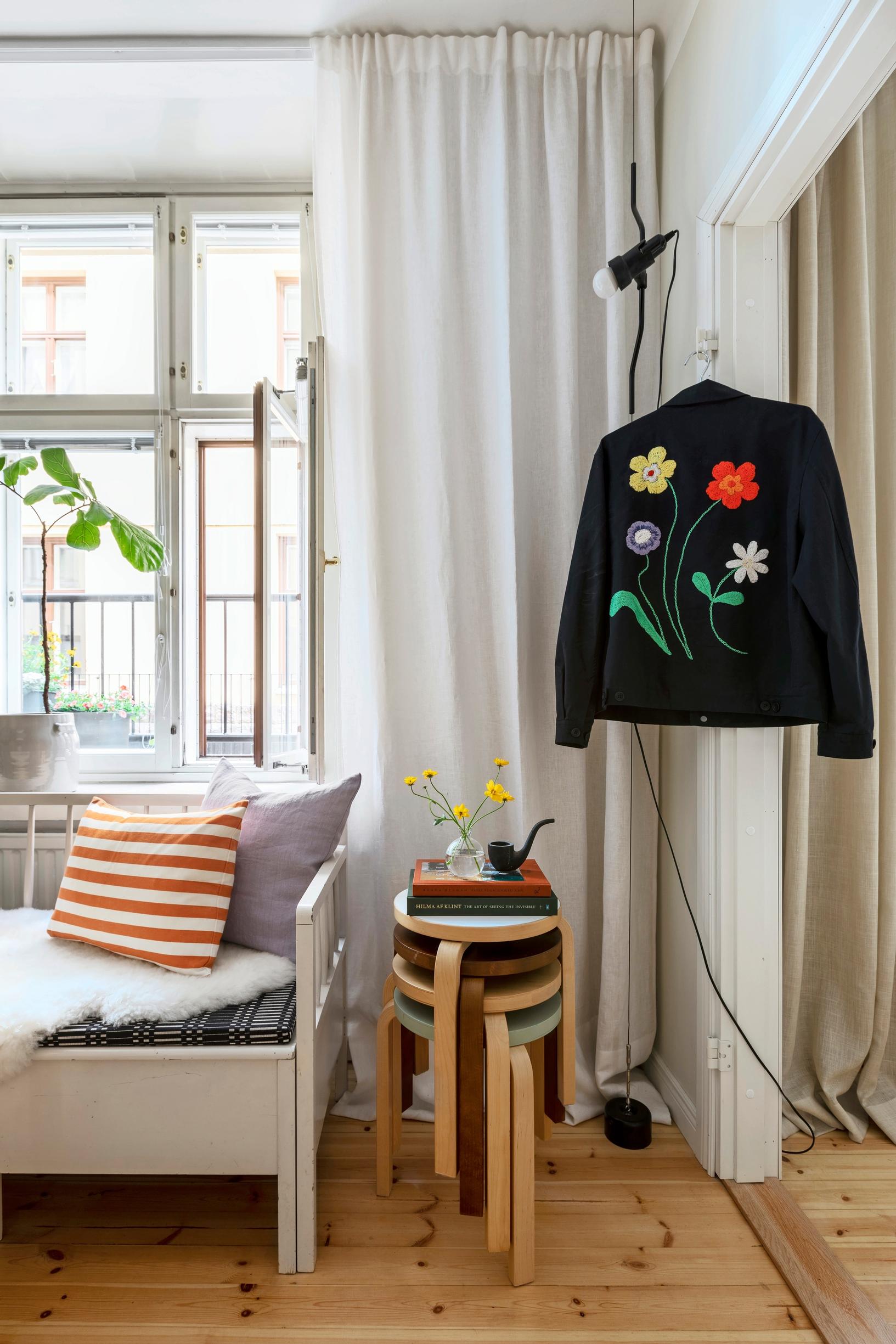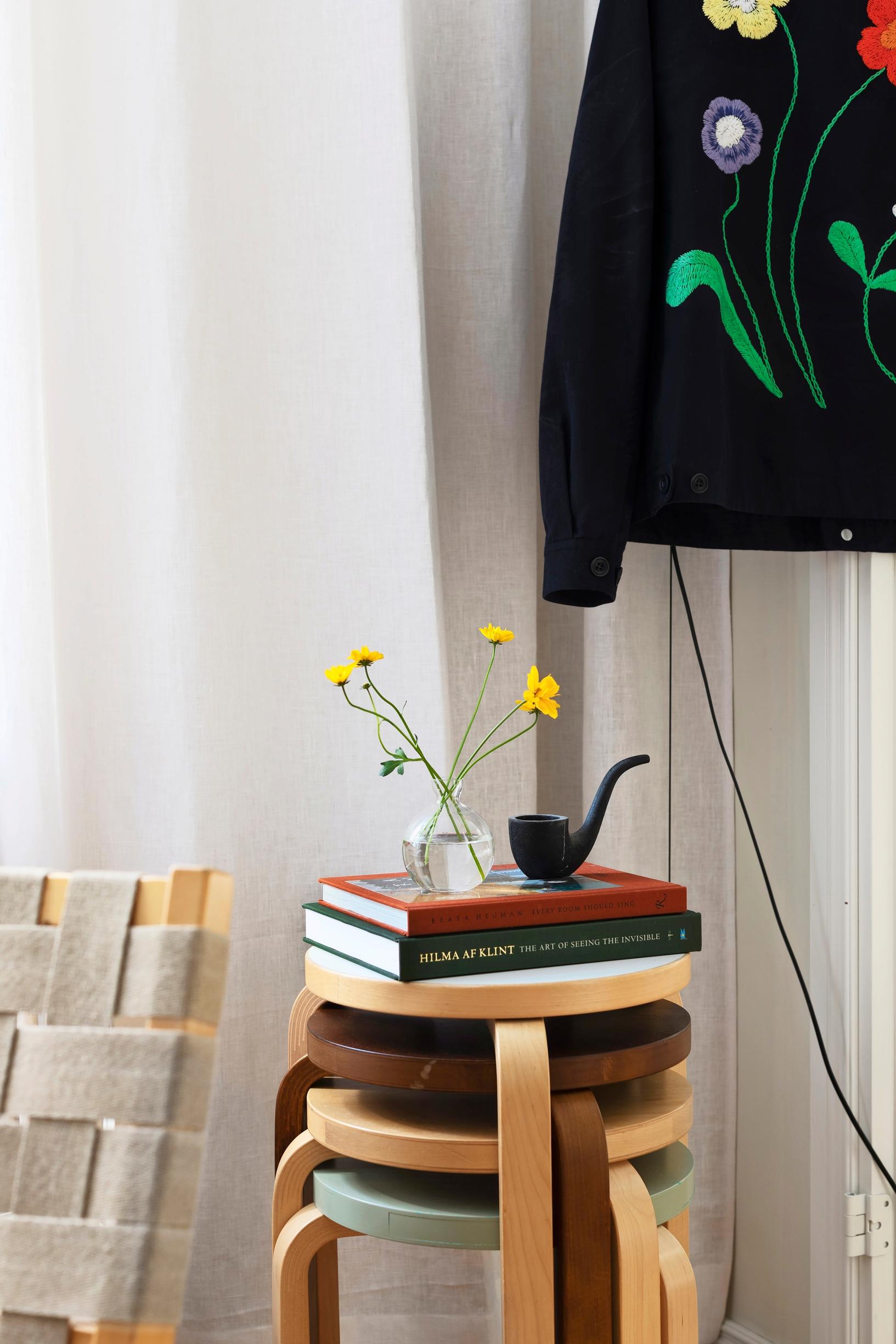
A little wobbly, but oh-so stackable: early Alvar Aalto stools can be surprisingly valuable
The most revolutionary detail in Alvar Aalto’s Stool 60 was the L-leg, which found its way into many other pieces of furniture. Learn to recognize the features that help you identify older three-legged stools—just in case you stumble upon a highly valuable rarity.
The three-legged Stool No. 60 was designed in 1933, marking the start of Artek. When the stool debuted that same year at the Wood Only exhibition in London, interest in Alvar and Aino Aalto’s bent-wood furniture spread across Europe. The most remarkable innovation was the L-leg, which could be adapted to many different uses. It even played a part in establishing Artek in 1935.
Alvar Aalto developed the bendable L-leg from solid wood with help from carpenter Otto Korhonen at the furniture factory owned by Korhonen, Oy Huonekalu- ja Rakennustyötehdas Ab. The Aaltos had collaborated with Korhonen since the late 1920s, but their work on the Paimio sanatorium furniture design and production resulted in several innovations in furniture construction.
The L-leg naturally followed from the bent-wood structures used in the sanatorium project. This time, they bent thicker solid wood. The Paimio chairs’ armrests, made by gluing together thin solid wood sheets and forming them in a mold, are closely related to the L-leg, although the bending method differs.
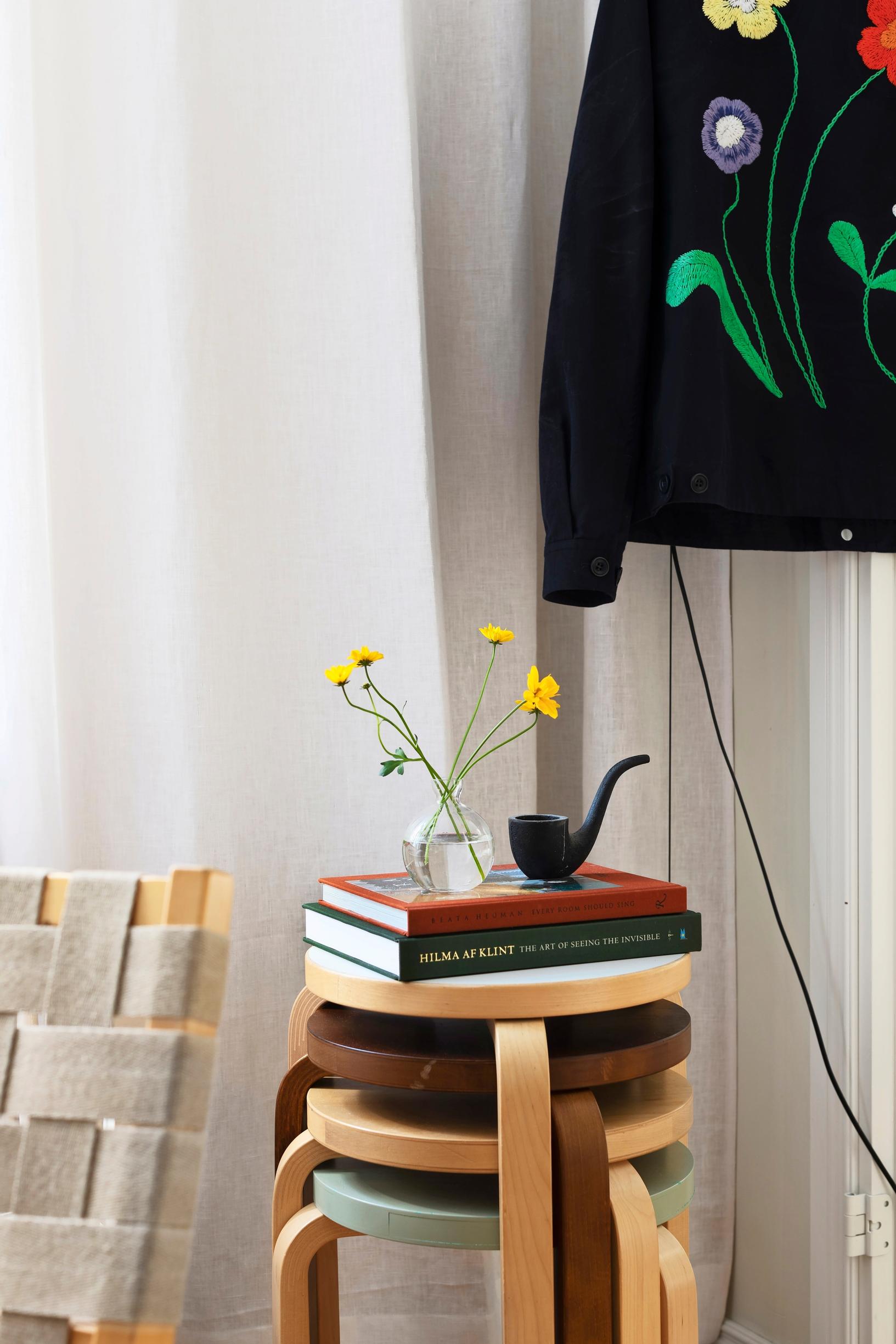
What’s this L-leg all about?
Closest in technical terms to Aalto’s L-leg might be Thonet’s steam-bent wood pieces, first devised in the 19th century. The experimental mindset of the Bauhaus and other European modernists inspired the Aaltos and Otto Korhonen considerably. Thonet’s late-1920s catalogs actually include tables whose shapes closely resemble furniture later designed by the Aaltos and Korhonen with L-legs.
However, the L-leg’s bending technique is different, and what sets it apart is its suitability for mass production. When creating the L-leg, grooves are sawed in a piece of solid birch cut to the needed length (though beech or ash were also used), in the section to be bent. Thin strips of glue-soaked wood are inserted into these grooves, and the wood is bent at the desired angle using heat and steam. Once the leg is bent properly, it can be securely attached to the stool or table top with three or four screws.
By changing the leg’s size, the L-leg can be the sturdy base for stools, benches, and even large extendable dining tables. This new manufacturing process eliminated the need for heavy joinery at the factory.
The look is timeless and architectural. Aalto’s relief-like experiments with bent wood function both as sculptural statements and practical explorations of wood’s structural properties. Meanwhile, their contemporaries on the continent were addressing similar design problems, although they often relied on bent steel tubing instead of bent wood for furniture’s load-bearing parts.
Why did the chair become four-legged?
Since the original Stool 60 has only three legs, it can be stacked into tall, tower-like piles—in theory, you could keep stacking them indefinitely. However, people soon noticed that the stool could easily tip over.
Most likely, the choice of three legs sprang from a functionalist desire for convenience, lightness, and space-saving. Even so, a four-legged stool was brought to market in 1934. Some suggest that the three-legged version might actually be more stable—on an uneven floor.
Its leading export markets included England (through Finmar), Switzerland (with licensed local production), Sweden (where Artek’s Hedemora factory opened in the 1940s), the Netherlands, and France. Beyond Sweden, other Nordic countries also appreciated and drew inspiration from the Aaltos’ furniture.
Later in the 1930s, American audiences gained interest in Aalto’s furniture, fueled by major museum and world fair exhibitions.
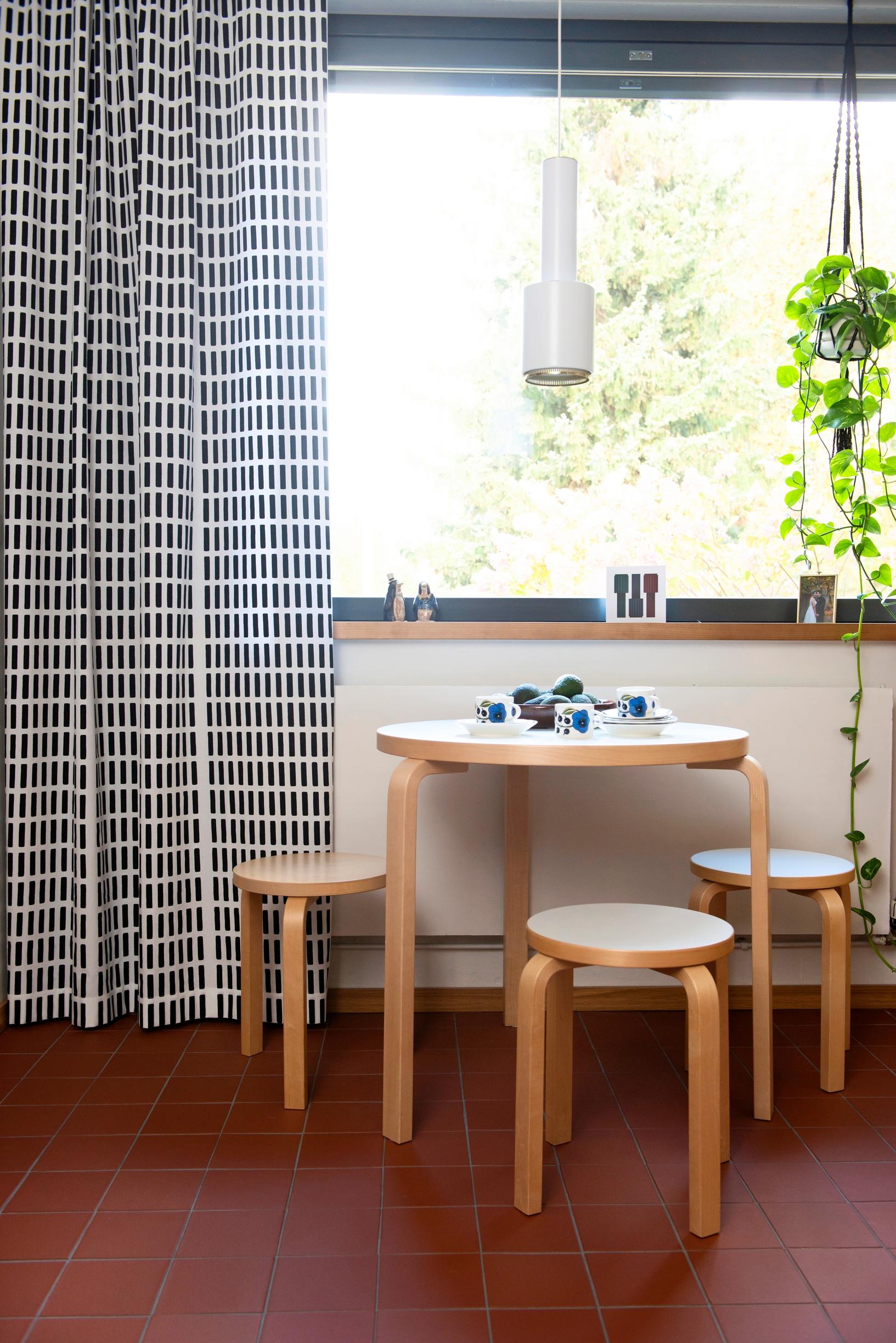
Identifying feature: four, five, or six strips?
Over the decades, Stool 60 has held fast to its core attributes: for instance, the seat diameter, thickness, and height have remained consistent apart from rare exceptions. Observing changes in certain details doesn’t always yield a foolproof date, and there are exceptions across different production runs.
According to empirical findings and Artek’s own archives, the earliest stools often had six thin strips in the bent portion of the L-leg. In practice, early editions might have had five or six strips. Five-strip legs are especially common in stools shipped to England.
Yet the bending method advanced rapidly, and once a more effective manual bending press came into use, four strips became the standard for L-legs.
In the mid-1960s, Korhonen’s factory moved and upgraded its equipment. At the new site, they started using a pressure-operated bending machine, which meant introducing an extra groove in the L-leg—after that, the leg contained five strips. Usually the leg was bent from solid birch, though other woods were also used. In addition to birch, ash was suitable for L-leg bending, whereas pine was too soft.
Additionally, the shape of birch seats and tabletops changed. A small notch once seen on birch seat edges disappeared along with the changing production method. While these adjustments are relatively minor, they can still help you determine a stool’s age and background.
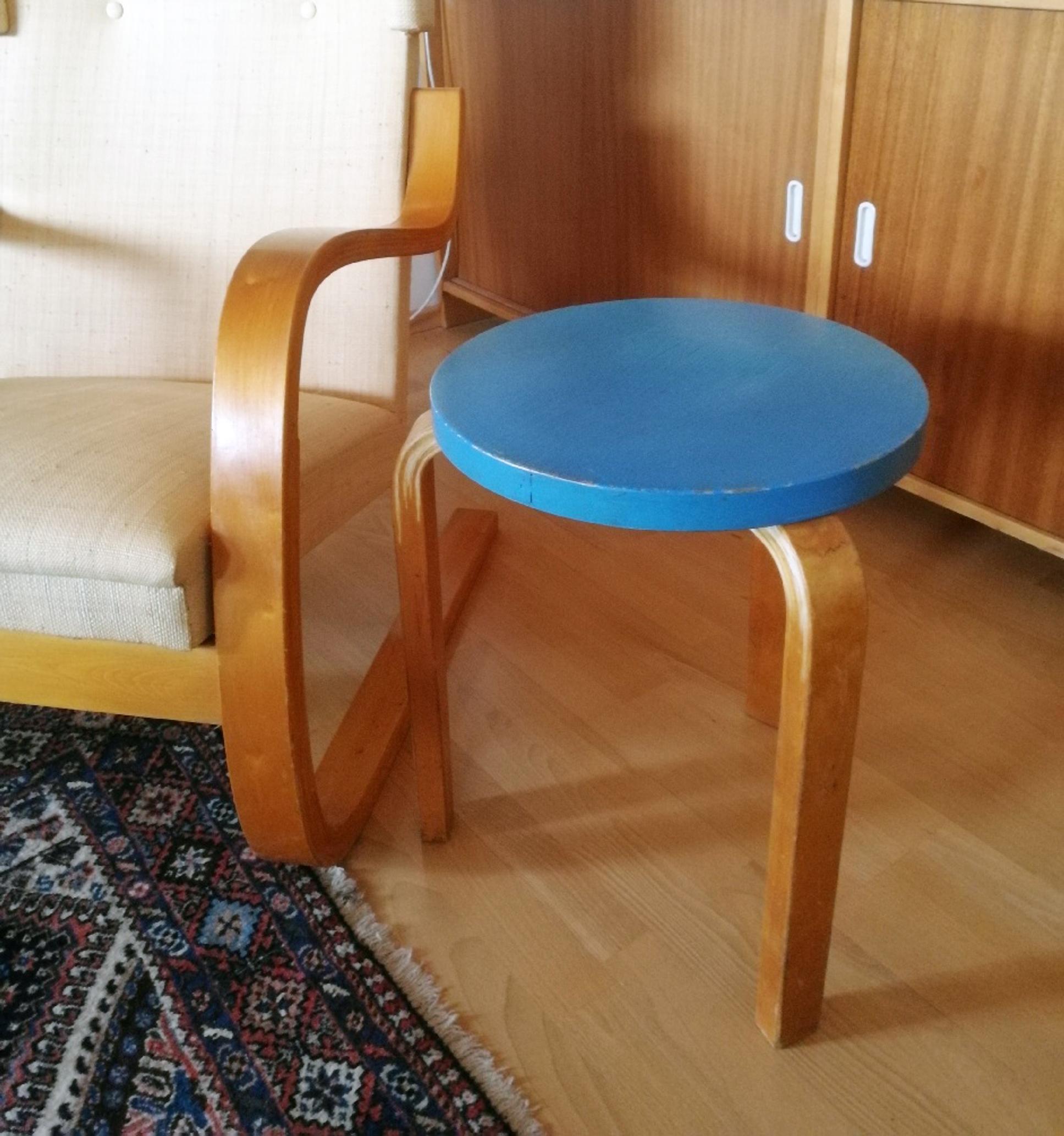
What on earth is the “sandwich” stool?
As early as the 1930s, buyers could choose more than just a birch stool. It could be upholstered, painted, stained in various shades, or topped with off-white or black linoleum. Later, additional linoleum shades became available. Cork-topped stool seats were also introduced, although linoleum likely proved more popular, which may have caused cork seats to be dropped early on.
Likewise, a wide array of veneers—ash, curly birch, mahogany, elm, teak, and oak—were offered. Additionally, so-called “Sandwich” seats were made in the 1930s and possibly into the 1940s. On a “Sandwich” stool, there’s a groove around the seat edge into which the upholstery fabric is tucked, leaving some of the wood edge tastefully exposed.
What surprises emerged during the period of shortages?
Between about 1939 and 1954, the L-leg briefly changed because of material shortages: rather than bending the wood, manufacturers used traditional finger-joint methods. They remained determined to keep production going by using limited resources, especially since glue was scarce.
Shortage-era production also introduced a smaller stool with L-legs made via finger joints. Otto Korhonen designed his own stool model that closely resembled Aalto’s, although the leg construction was different. Once shortages ended, the original bending method for the L-leg returned.
After the war, Artek opened a factory in Hedemora, Sweden, which helped offset reduced Finnish production and opened more efficient export channels to the United States. From that time, we can see several distinctive Hedemora variations of standard Aalto models. Also, ever since Artek’s founding, its drafting office has modified many standard Aalto designs to better fit interior design projects.
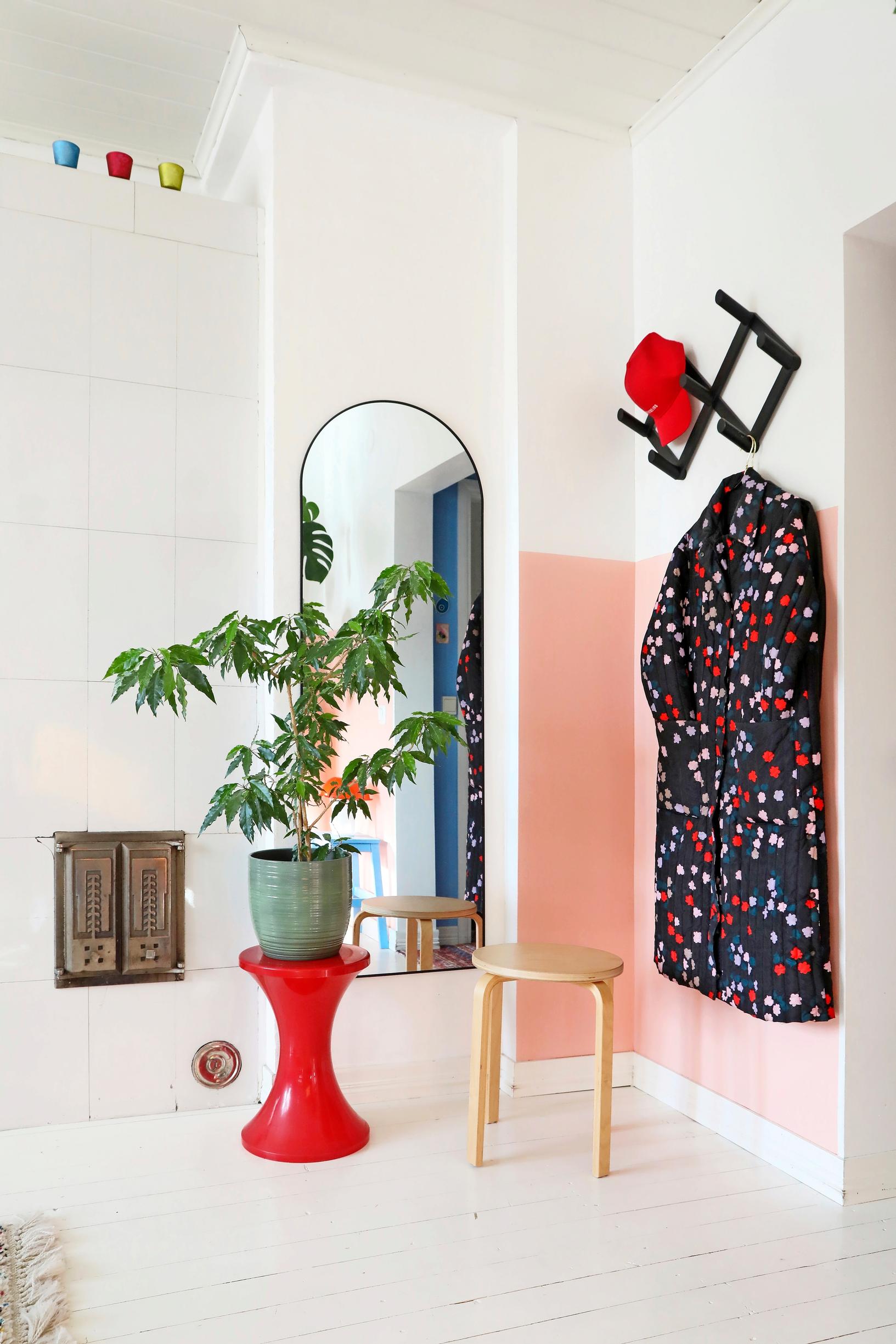
Later, Stool 60 was also produced with a durable laminate seat. HPL became more common starting in the 1970s, and it too was available in various colors. Over time, the stool’s lacquered finishes changed several times as furniture manufacturing evolved, including for environmental reasons. Examining these surface treatments can offer clues about the stool’s age.
One hint about a stool’s age lies in the screws: in 1976, Korhonen’s factory switched from slotted screws to Phillips-head screws. The exact timing isn’t entirely certain, and the transition may have been gradual.
What special versions exist?
Over time, the three-legged stool has evolved into a conceptual piece. Collaborative projects with various brands, designers, and artists often center on Aalto’s stool. Notable examples include Monocle, Mike Meiré, Comme des Garçons, Supreme, Mina Perhonen, Wood Wood, Barbara Kruger and Moomin Characters.
Artek has recently highlighted a more mindful and holistic approach to raw materials. Its collaboration with Italian design firm Formafantasma introduced an Aalto stool as the first Artek product aimed at cutting waste while embracing the natural traits of wood in its appearance.
Among Artek’s most recent twists on Stool 60 are versions featuring the Moomins, along with designs showcasing patterns from Maija Isola’s Arkkitehti collection for Marimekko, including the Lokki motif. Both of these collaborations celebrate Artek’s 90th anniversary.
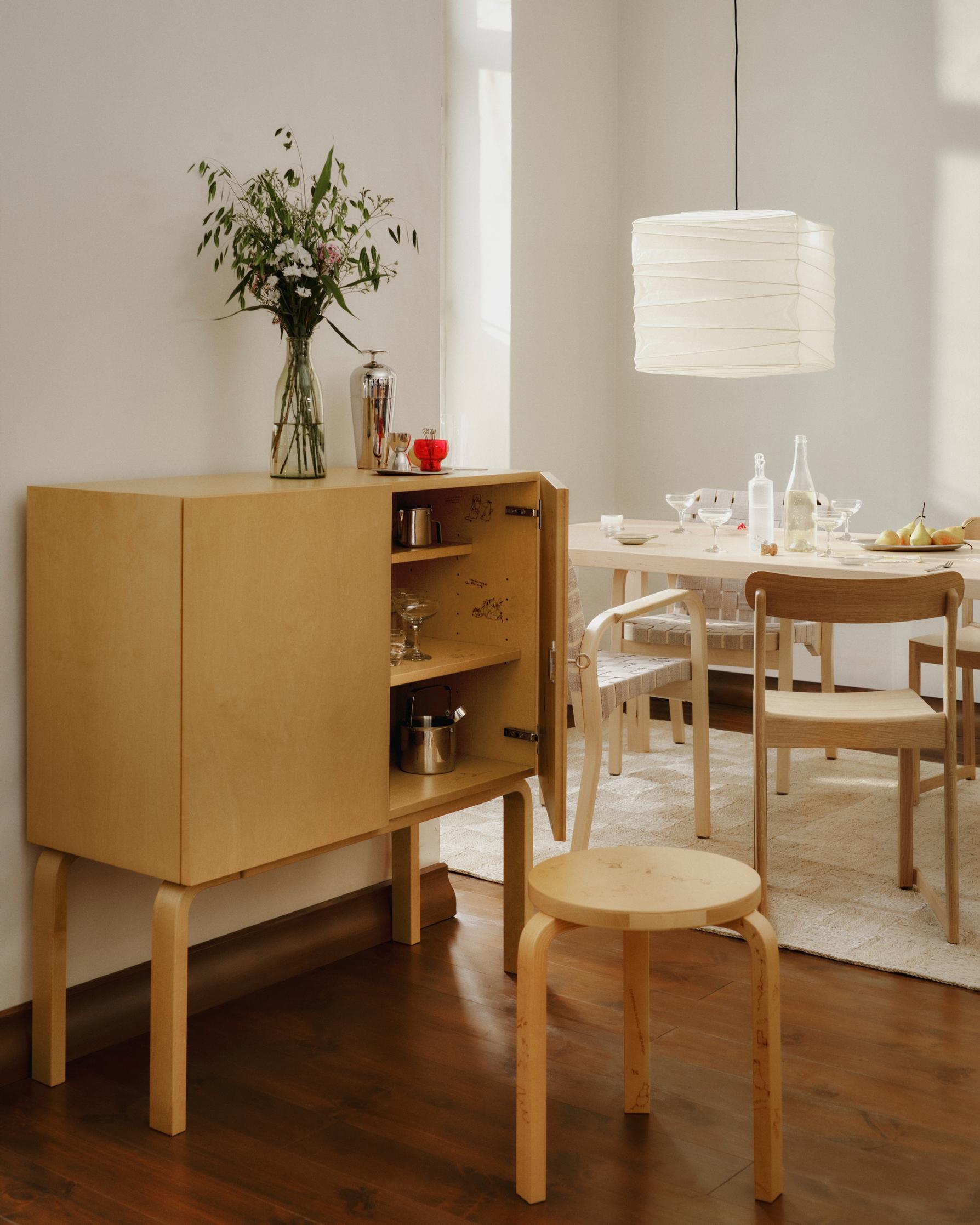
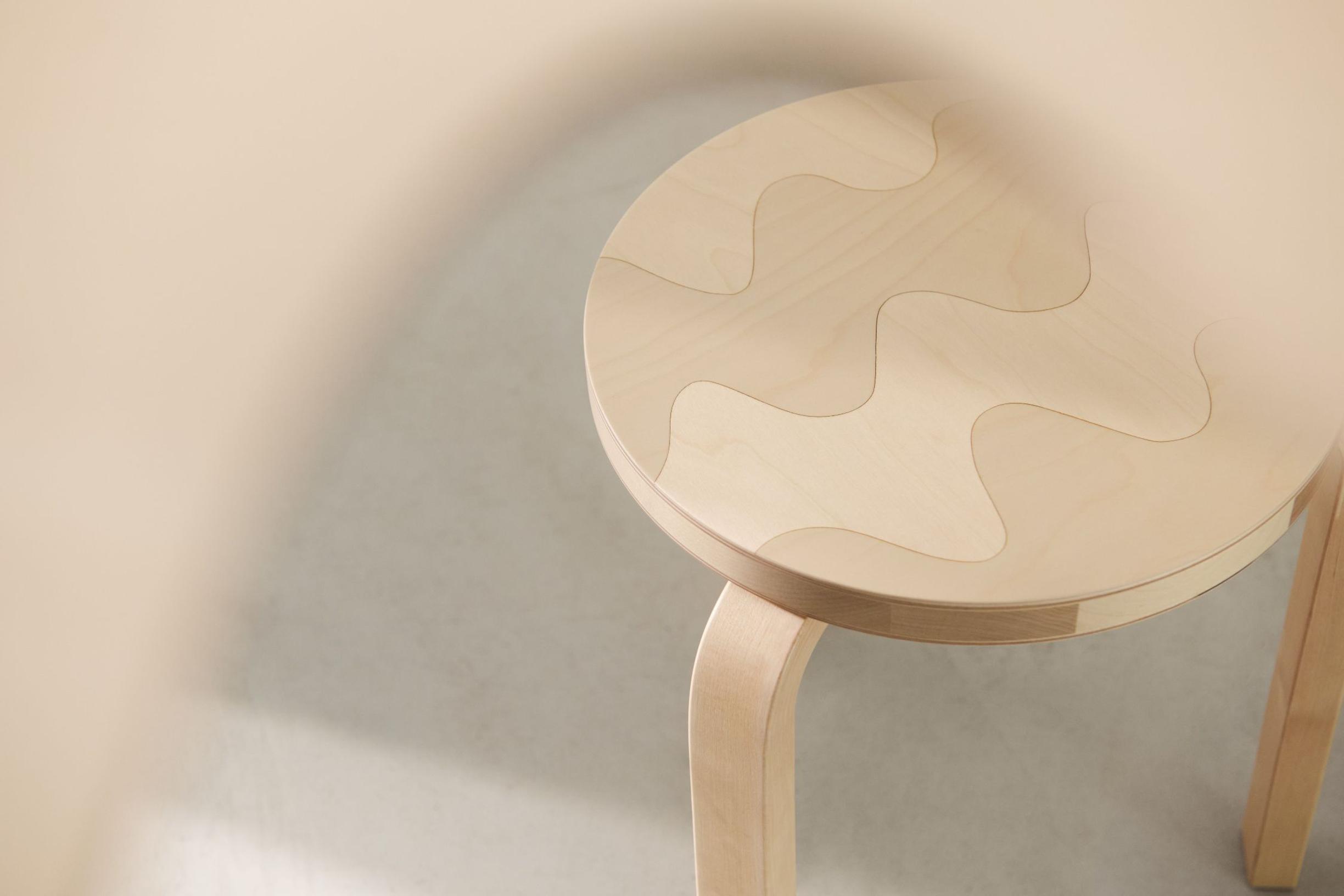
What is stool 60 worth?
A standard model costs about 265 euros, but special editions always run higher. The most sought-after and potentially high-value finds are early models from the stool’s first years and rare variations on the standard.
